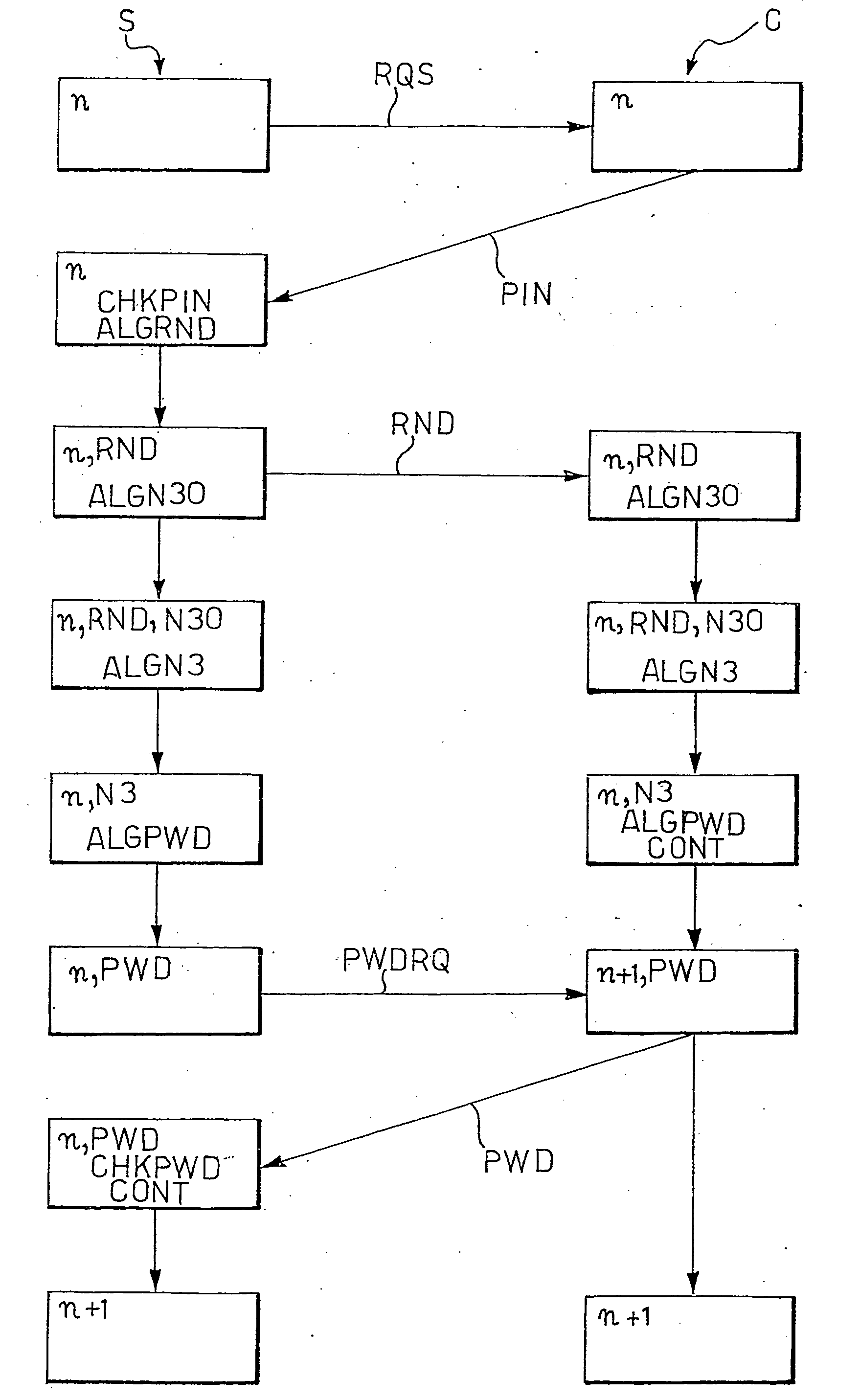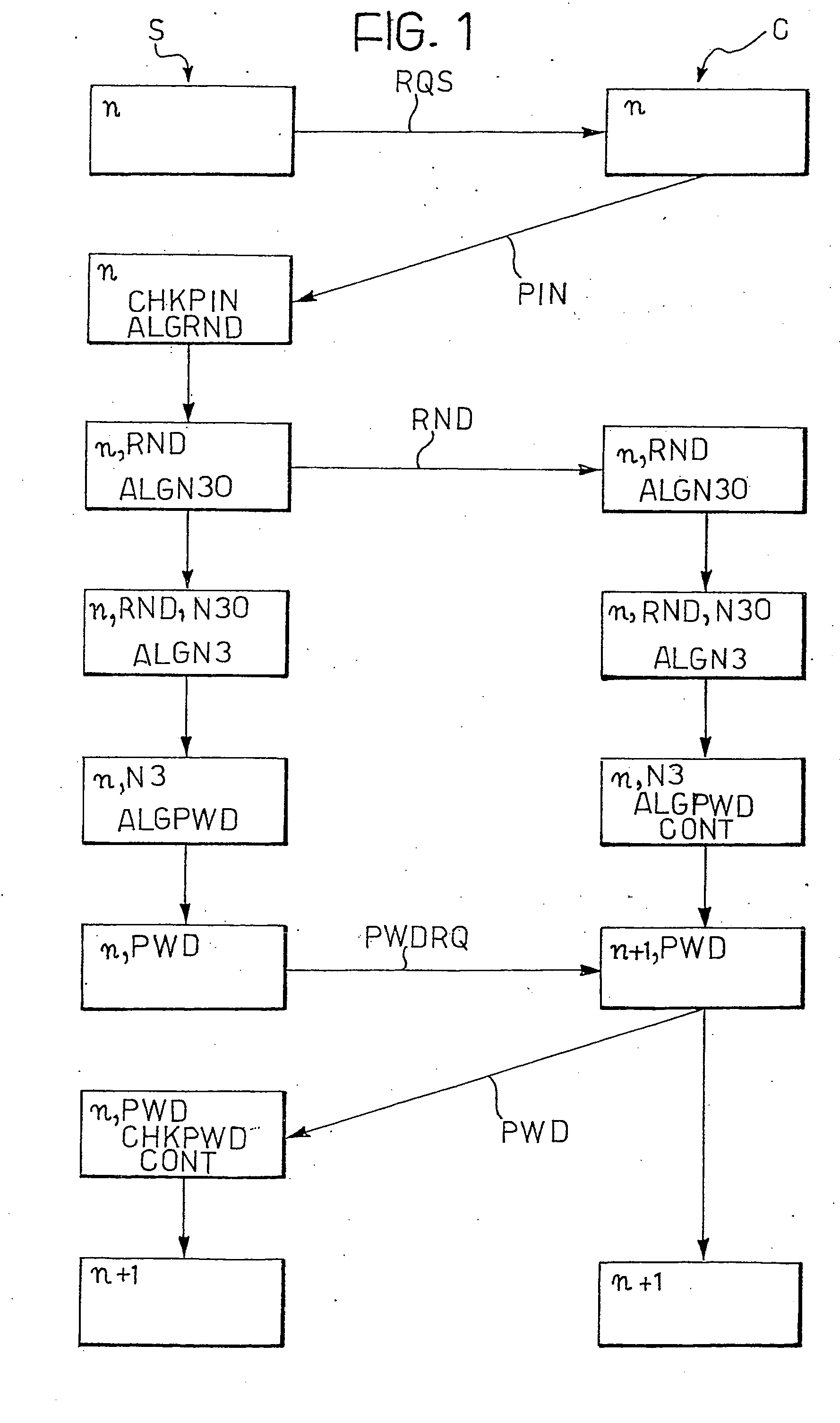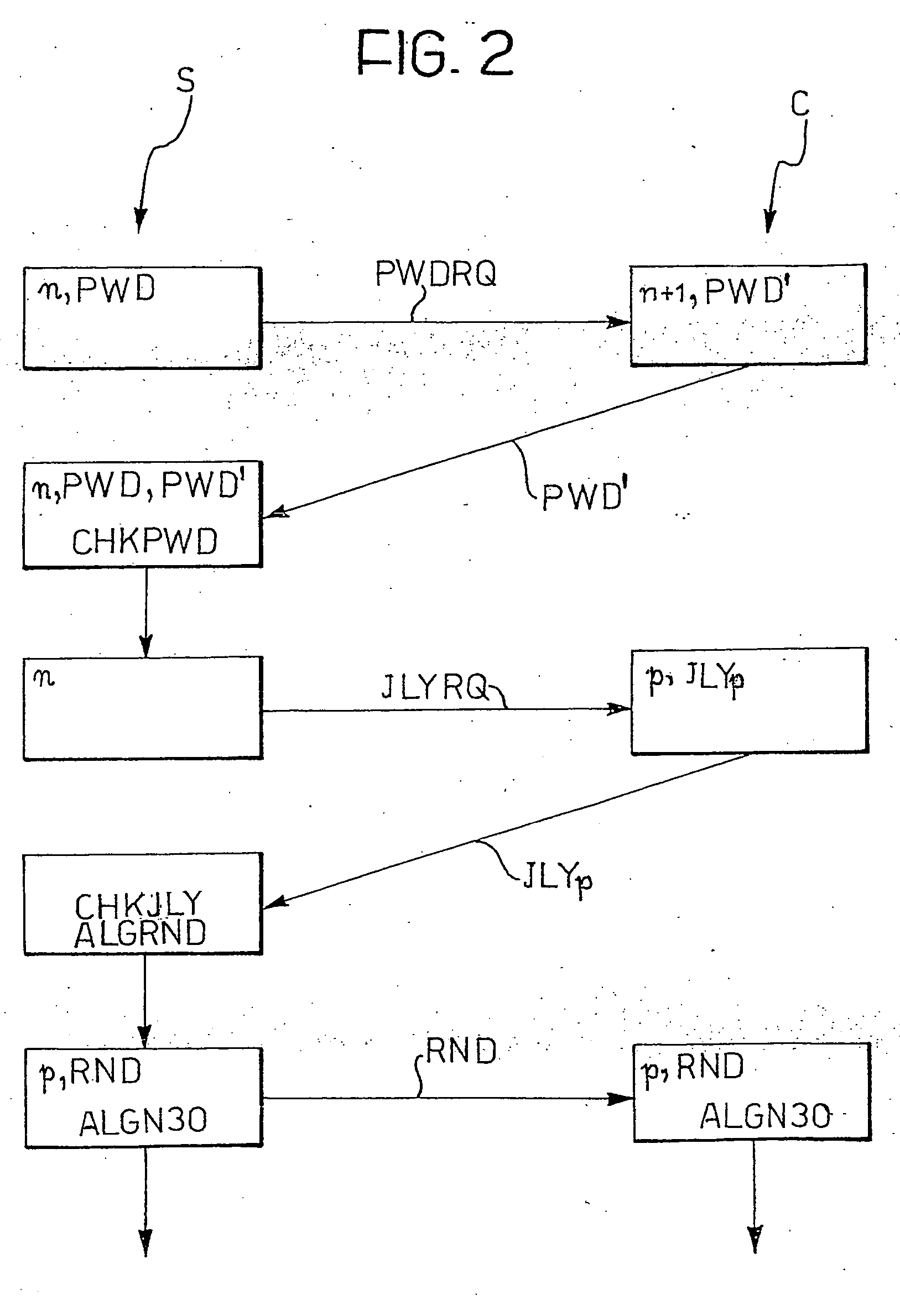Method and system for identifying an authorized individual by means of unpredictable single-use passwords
a single-use password and authorized individual technology, applied in the field of confidential information transfer, can solve the problems of inability to operate unlawful decoding, poor control of the security of insufficiently protected data, and inability to decode messages, etc., and achieve the effect of convenient insertion
- Summary
- Abstract
- Description
- Claims
- Application Information
AI Technical Summary
Benefits of technology
Problems solved by technology
Method used
Image
Examples
Embodiment Construction
[0080] A generic telematics network architecture (LAN, MAN, WAN, up to the Internet world wide web) configured for access by a user to a service provided on the network makes provision for both the provider party and the user party to be each provided with respective electronic data / information communications and processing systems.
[0081] In particular, at the service provider there is located a processing system such as a server capable of managing a procedure for identification of a party authorised to operate with the provider and to define an encryption system, if any, to be used in the communication, and also to deliver the serviced requested once recognition has taken place. The user accesses the network via an interface device comprising a processing terminal or similar device designed to allow identification of the authorised party in order to obtain clearance to operate.
[0082] Description of the User Terminal
[0083] According to a preferred embodiment, the user's processi...
PUM
 Login to View More
Login to View More Abstract
Description
Claims
Application Information
 Login to View More
Login to View More - R&D
- Intellectual Property
- Life Sciences
- Materials
- Tech Scout
- Unparalleled Data Quality
- Higher Quality Content
- 60% Fewer Hallucinations
Browse by: Latest US Patents, China's latest patents, Technical Efficacy Thesaurus, Application Domain, Technology Topic, Popular Technical Reports.
© 2025 PatSnap. All rights reserved.Legal|Privacy policy|Modern Slavery Act Transparency Statement|Sitemap|About US| Contact US: help@patsnap.com



